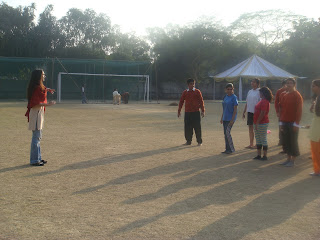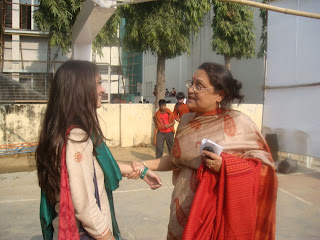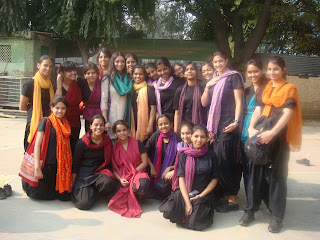Okay, so it's a morning ramble, but I think I do have something to say. Many 'young' artists face this peculiar obstacle of 'being young'. Because they are young, they are not considered experienced. And young may well just mean that they've not been exposed to audiences enough, for whatever reason. Artists are classified into 'young', 'middle-level' and 'senior'. The senior category is uncontested. You've got age and experience on your side. In most cases, anyway. Incidentally, that still does not always mean they are the most talented.
The confusion comes in the other two categorizations. When a 40-something year old dancer wins an award in the young dancer's category, and a 35-year old dancer with perhaps more exposure, but as much training and experience as a 'young' dancer is termed 'middle-level', I'm baffled. Then, a 26 year old is not eligible to apply in the young dancers' category for most festivals. But does that mean he/she becomes a middle-level artist? Or do they remain 'young' (and therefore, inexperienced) until a cultural organisation/sponsor deems them as 'experienced' enough to enter the middle-level? On what basis are these categorizations made and foisted onto artists? Moreover, why does being 'young' imply less capable of creativity, choreography and composition? Does creativity come at a certain age, and not before that?
Then, I wonder - Is performing frequently (exposure to the public) proof of being 'experienced' (and no longer young?!)? What if an artist has been practicing his/her art tirelessly for twenty-twenty five years, but has performed seldom in those years because of other constraints or priorities?
Moreover, what about all those talented, hardworking artists who have not had the privilege of pushing their art form onto public platforms? We all know that performance opportunities don't come merely out of hard work and talent - factors such as who we know, how we market ourselves, how we are labelled (young, middle-level, experienced, graded by Doordarshan, empanelled by ICCR etc etc), and how much we can afford to spend - all contribute to how often we get seen in public.
Perhaps it is fair to assume then, that experience is measured not by the years of training/dedication, nor solely by knowledge of the art form, but rather by how old we are and how exposed we are to the public. In turn, how 'exposed' we are depends not on how talented we are, but rather by who we know, how we are known and how we market ourselves.
Isn't it time to set aside these categorizations, and be given platforms to perform based only on talent, hard work and creativity? Young or old, thin or fat, rich or poor, exposed/supported or not - there is talent and mediocrity at all of these levels. Isn't it time to measure 'experience' and worth based solely on skill and perseverance? Isn't it time to cast aside the other factors when measuring experience and worth? I, for one, wait for the day when I apply for a festival/performance, and the only thing they ask me for is a sample of my work.











